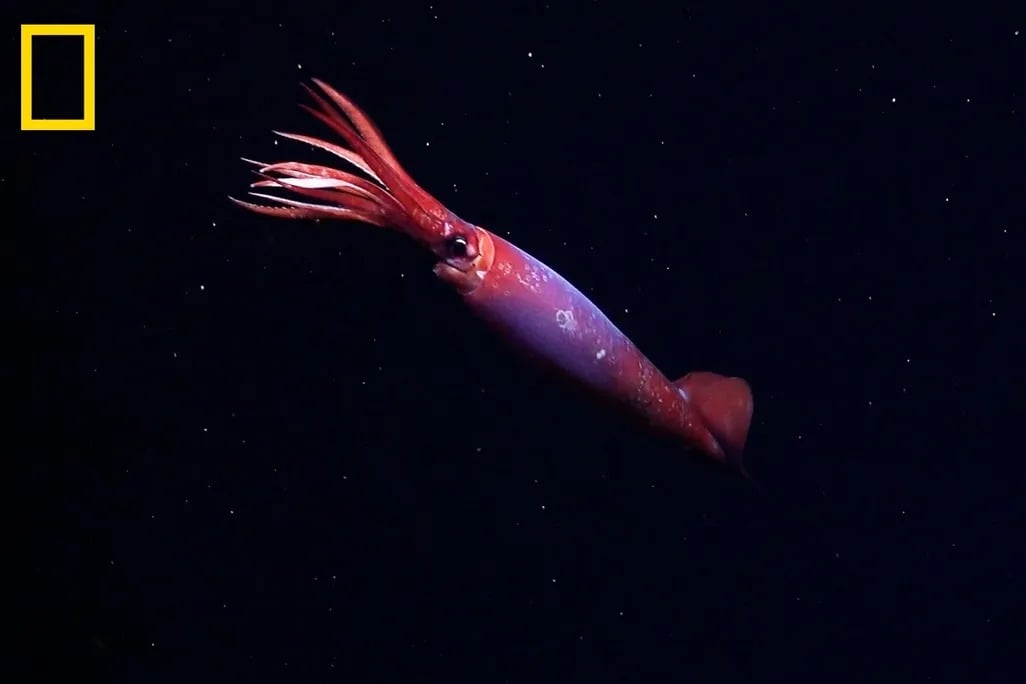First-Ever Footage of Rare Antarctic Squid Captivates Scientists
Language
Reading Level
Listen to Article
Alignment

A team of international researchers has captured the first-ever footage of an extremely rare Antarctic gonate squid swimming freely in its natural habitat. The species was previously known only from dead specimens caught in fishing nets or remains found in the stomachs of predators like whales and seals.
The video, released on June 10, 2025, was filmed by scientists aboard the research vessel Falkor (too). The team had originally intended to explore Powell Basin in Antarctica’s Weddell Sea. However, due to icy conditions, they redirected their remotely operated vehicle (ROV), SuBastian, to the basin’s outer edge. There, they stumbled upon the elusive squid. It was gliding silently at a depth of about 7,060 feet (2,150 m). The researchers followed the animal for a few minutes before it vanished into the darkness.
The animal's deep red color, large fins, and a hooked central tentacle helped identify it as an Antarctic gonate squid. The scientists were unable to determine the squid's age or gender. But apart from a few scratches, the 3-foot (91 cm) long cephalopod appeared healthy. During the brief encounter, it even released a burst of glowing green ink. This defensive response was likely triggered by the ROV’s bright lights.
This is not SuBastian's first big discovery this year. On March 9, 2025, the ROV captured the first video of a living colossal squid in its natural habitat. It was swimming about 2,000 feet (610 m) below the surface of the South Atlantic Ocean. A month later, the ROV revealed a hidden ecosystem beneath an Antarctic iceberg. With these groundbreaking findings, SuBastian continues to deepen our understanding of the ocean’s mysterious creatures and habitats.
Resources: Smithsonianmag.com, Livescience.com, Independent.co.uk

Get the Workbook for this article!
Workbook contains: Article, Reading Comprehension, Critical Thinking Questions, Vocabulary in Context (+ answers), Multiple Choice Quiz (+ answers), Parts of Speech Quiz (+ answers), Vocabulary Game (+ answers)Cite Article
Learn Keywords in this Article
23 Comments
- supersonic10aabout 1 monthcool
- capybara6262 monthsThat is so cool but the head is kinda gross
- rwsdwjhfhp0i3 monthsthis is really cooooooooollllllll I like the fact that there is a lot of cool animals out there that we can find
- lyrycifujubu3 monthsvery cool
- honjing20253 monthsCool squid! SOOOO beautiful
- ashvi3 monthsSoo cool like wow!!
- elliot_13 monthsso awesome
- novisatecysa3 monthswow its so cool and adorable and I wonder if I will ever see something as cool and rare as that!!!!!
- elliot_13 monthswow
- muverezuhyje3 monthsnice
- jahudykirohi3 monthswow that is just crazy I wish I could experience this